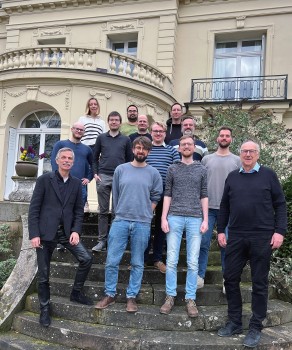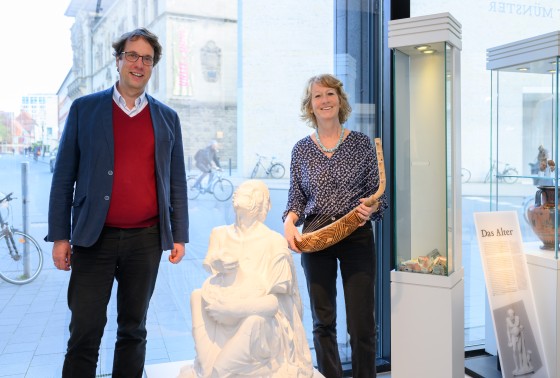
Preceding the work: the search for a common language
It is an unwritten law: scientific exchanges and interdisciplinarity are the basis for excellent research. How does interdisciplinary collaboration increase the gain in knowledge? What obstacles have to be overcome in everyday work? We take a closer look at these and other questions by presenting two research projects from the Humanities and the Social Sciences.
DFG research group “The Digital Town of the Future”

“First of all, we had to find a common basis,” says Becker. The eight researchers who drew up the application for funding have been working together for three years, and before they submitted the 300-page application they met once a week – last but not least, in order to learn from one another. For information systems specialists, for example, the reference information mode – used in developing and implementing business software solutions – is a common working method. Sociologists for their part use the “social-ecological research heuristic”, which links up social, ecological and economic perspectives in order to develop strategies to solve social sustainability problems. “The sophisticated methods which we use in our five disciplines are all very different, and combining them in our project leads to new insights,” Becker explains. “We don’t look at each other in confusion anymore when we use the terminology.” Today, the coordinator and the eleven-strong research staff have found a common working basis for the sub-projects – agreeing on the so-called capability approach developed by the Indian economist Amartya Sen. The research group is focusing on four central aspects: “Civil Society and Social Services”, “Administration and Politics”, “Business and Energy” and “Education and Culture”. And the capability approach, which originated in the Social Sciences, fits in perfectly here: in the end, the question is what people need for a good and fulfilled life.
Topical Program: “Time and Artefact”

“We have to develop a toolbox which we can all use, so that we don’t talk at cross-purposes,” comments co-spokesperson Prof. Dorothea Schulz from the Institute of Ethnology. While research into artefacts is among the core subjects of some disciplines within the Humanities, other subjects in the Humanities and Social Sciences have only very recently begun to turn their attention to artefacts and how they are embedded in changing social and historical contexts. “This unique combination we have at Münster of empirical-descriptive and systematic-normative expertise relating to artefacts is something that we want to bring together,” explains Achim Lichtenberger. One example is the discussion on the biography of objects. Researchers working in the field of Classical Antiquity and History use this method to record the ‘life story’ of an object. Social and cultural anthropologists, in contrast, fear that the concept does not do justice to the mutability of objects and their appraisal by humans resulting from their transnational mobility. What the project aims to do is to find a feasible approach for all disciplines.
Author: Kathrin Nolte
This article is from the university newspaper wissen|leben No. 3, 3 May 2023.
